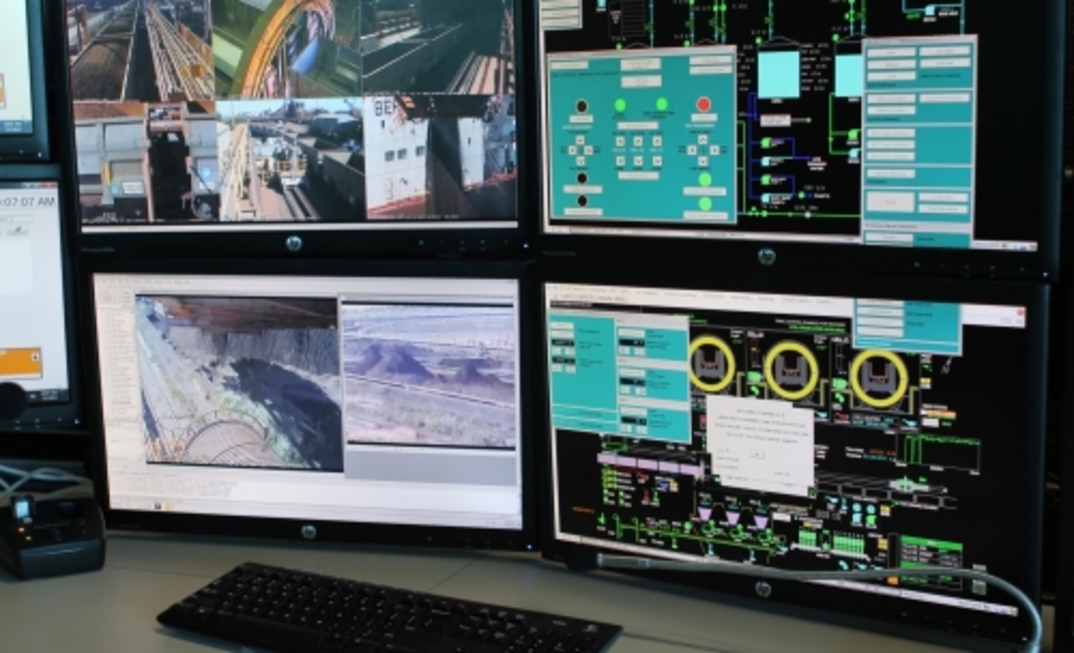BHP iron ore boss Jimmy Wilson is quick to point out that the company is a latecomer in this field, but reckons it is catching up quickly.
Like its iron ore rival, Rio, the overwhelming thrust behind its Integrated Remote Operations Centre is efficiency.
BHP will be hoping that it can uncover all the bottlenecks in its pit-to-port infrastructure and remove them.
This way, it can achieve potentially massive gains in throughput for very little capital spend.
On first blush it appears the BHP IROC, situated in its Western Australian headquarters in the heart of Perth’s CBD, is pretty much identical to Rio Tinto’s offering near the domestic airport.
One thing that BHP has over Rio is that its centre has an outlook over the Swan River, while the best Rio can hope for is a glimpse of incoming and outgoing jets.
In some ways, BHP could be excused for dragging its feet in this area.
In 2010, it looked like the company might get access to the Rio Tinto ROC technology through the then proposed merger of the companies’ iron ore operations.
When Supply Side asked who BHP had to rival Rio Tinto’s head of innovation John McGagh – who drove Rio’s Mine of the Future projects, of which the ROC was one outcome – the BHP answer was, “we’ll be getting John”
It didn’t. So BHP had to go ahead with it itself. This has meant a bit of a delay, but by the looks of things it is fast catching up.
According to BHP, the IRO uses industry-proven technology applications comprising a mine fleet-management system, train control and fixed plant-control systems for mine and port operations.
Supply Side asked where these “industry-proven” systems came from. This question was yet to be answered.
One can speculate given BHP’s ties to Caterpillar, that a lot of the truck automation and fleet-control applications will come from Big Yellow’s shelves.
That could mean Caterpillar’s Minestar fleet-management system being built into the system.
The one problem with Minestar is that it does not play as nicely with trucks from other makers. Basically – and quite sensibly, from Caterpillar’s point of view – it gives its best results when controlling Caterpillar trucks.
There also is talk of extending IROC into BHP’s coal operations.
A Caterpillar spokeswoman said BMA was investigating the feasibility of an integrated remote-operations centre.
“The application of this type of integrated remote-operations technology is being investigated by BMA for its operations,” she said.
“No decision will be made until this work is completed towards the end of the year.”
Rio also said at one stage that it would be looking at transferring its Mine of the Future iron ore learnings across its coal operations.
However, as time passed, the ardour for ROCing coal faded. Instead, Rio’s attentions have turned to better ore-sorting technologies and tools for rapidly developing underground operations.
This could be a reflection of where Rio sees it can get better return on its investments.
Its Oyu Tolgoi copper operation in Mongolia and potential undergrounding at its Kennecott copper mine in Utah are key focuses. Coal has become less of a priority. Indeed, Rio has been looking at selling off its Australian coal mines.
For BHP, the situation may well be different. Its BHP Billiton-Mitsubishi Alliance operations are much larger and have the potential to bring the company a healthy coin.
However, coal is not so easy to ROC.
The biggest benefits in the ROC system come from being able to identify infrastructural blockages and choke points. That is fine when the company controls all the pit-to-port infrastructure.
In the coal space on Australia’s east coast that is not the case. Both Rio and BHP have to deal with third-party port and rail providers.
























